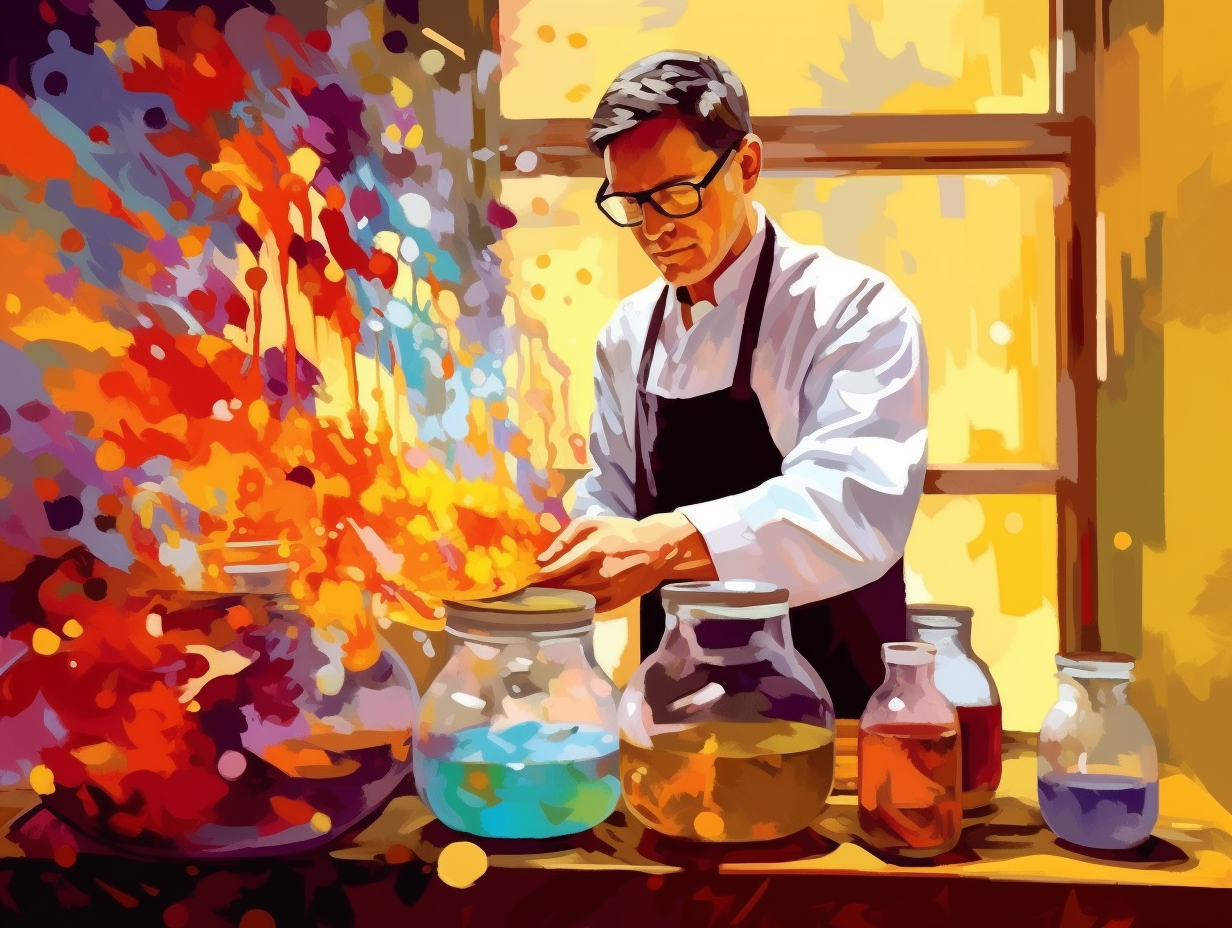Discover the Unseen World: Top 11 Engaging and Fascinating Facts About Neutrons!

1. Neutrons: The 11½ Minute Ticking Clock
Neutrons: they're like the clock that keeps on ticking, but only for 11½ minutes until they turn into a proton and an electron, giving the phrase "time flies" a whole new meaning: Interestingly, neutrons have a relatively short half-life of just 11½ minutes when isolated, but become more stable and contribute to an element's mass when they're nestled in the nucleus of an atom.
Source => wondriumdaily.com
2. Hydrogen: The Quirky, Neutron-less Detective
Like a quirky detective with no fingerprints, hydrogen waltzes through the atomic world missing a key feature, a neutron, that would put its finger on the isotopic scale: Hydrogen is the only element without a neutron in its nucleus, making its isotopes like deuterium and tritium crucial players in nuclear fusion reactions.
Source => chem4kids.com

Did you know that atoms are experts at social distancing? Discover how 99.99% of empty space within atoms plays a huge role in the world of particles!
=> Fun Facts about Atoms
3. Neutrons: Clingy Friends of the Atomic World
Did you know that neutrons are like those clingy friends that can make or break a party, depending on whether they're invited or not? They hold the secret sauce to powering up your everyday gadgets or turning them into radioactive duds: Neutrons are key components of atomic nuclei, impacting atomic stability and even creating radioactive isotopes when they're captured in nuclear reactions. Their discovery in the 1930s was a game-changer for the world of nuclear chemistry!
Source => chem.libretexts.org
4. Neutrons: Nuclear Ninjas & Proton Party Pros
Neutrons: the unsung heroes of the atomic world, sneaking into the nucleus like a stealthy ninja at a proton party! They bolster the strong nuclear force without causing any extra electromagnetic repulsion amongst their charged proton buddies.
Source => aether.lbl.gov

5. Neutrons: Chaos Catalysts of Atomic Parties
You know that friend who constantly sparks chaos at parties, leaving destruction in their wake and everyone wondering how it all happened? Neutrons are like that, but on a nuclear level: When they initiate a chain reaction, each neutron goes off splitting more nuclei, potentially doubling the fission with each generation and unleashing a wild (but powerful) energy extravaganza through kinetic energy and gamma rays.
Source => atomicarchive.com
6. Neutrons: Ultimate Shape-Shifting Performers
Neutrons: the ultimate shape-shifters, always ready for a quick costume change and an electrifying performance, keeping physicists on the edge of their seats! In the thrilling plot twist called beta decay, a neutron can transform into a proton while spitting out an electron and an electron antineutrino, changing the atomic element and leaving everyone at the atomic party in shock.
Source => neutrinos.fnal.gov
7. 15 Minutes of Fame: Neutrons' Wild Existence
Neutron's in the wild are victims of a quarter-hour of fame: when liberated from atoms, these particles exist for a mere 15 minutes, before going all Jekyll-and-Hyde on us and decaying into protons. However, when cozily nestled within an atomic embrace, they can enjoy the good life for billions of years.
Source => caltech.edu
8. Neutrons: Dance Floor Masters & Nucleus Stabilizers
Neutrons: masters of the dance floor, spinning their way into our hearts, and keeping atomic nuclei from falling apart like a poorly choreographed conga line! The serious reveal: these subatomic party animals possess a property called "spin" that not only makes them rotate, but also pairs them with protons to create a stable nucleus, preventing a chaotic atomic meltdown.
Source => byjus.com
9. Neutron Stars: Weighing a Billion Tons of Fruitcake
If you thought trying to fit your grandma's fruitcake in your stomach at Christmas was dense, wait till you hear about neutron stars: A mere Ping-Pong sized chunk of a neutron star would weigh a whopping billion metric tons! As scientists seek to unravel the mysteries of neutron stars' inner structure through experiments like the Neutron Star Interior Composition Explorer, we're inching closer to understanding the fundamental limits of matter and gravity.
Source => scientificamerican.com

10. Neutrons: VIP Head Honchos of Nuclear Reactions
Neutrons may not have any charge, but they’re definitely in charge when it comes to nuclear reactions! Just think of them as the head honchos of the atomic world, throwing VIP fission parties with their uranium buddies: When a neutron crashes into a uranium atom, it causes it to split into two smaller atoms, releasing a massive amount of energy as heat and radiation. These newly unleashed neutrons then get the invitation to start their own fission fiestas, creating a chain reaction and proving once and for all that it's hip to be a neutron catalyst.
Source => eia.gov
11. Cosmic Rays: Celestial Ninjas Attacking Our Gadgets
Cosmic rays are like stealthy celestial ninjas, sneaking past our defenses and wreaking havoc on our poor, unsuspecting gadgets: These cosmic-ray-induced neutrons have the ability to penetrate human bodies, buildings, and even electronic equipment, causing soft errors in semiconductors and memory chips, reminding us that we are never truly safe from the power of outer space.
Source => hitachi.com
Related Fun Facts




















